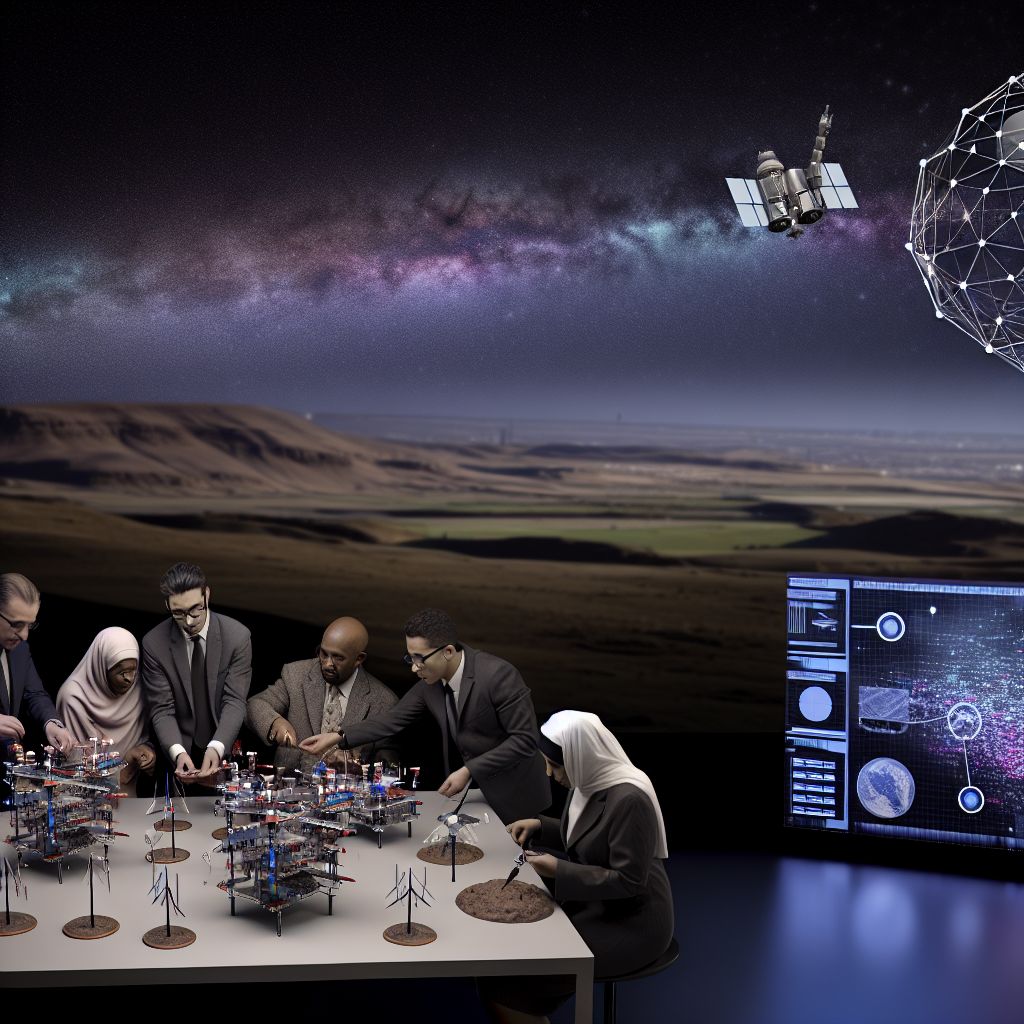Deutsch: Verbindung / Español: Interconexión / Português: Interconexão / Français: Interconnexion / Italiano: Interconnessione
Interconnection in the Space industry context refers to the linking of spacecraft systems, satellites, ground stations, and data networks to enable seamless communication, data exchange, and operational Coordination. This includes the physical and logical connections that allow for the transfer of information and commands between various components of space missions, both in Orbit and between space and Earth. Interconnection is crucial for the successful operation of individual spacecraft, the management of satellite constellations, and the integration of space-based data with terrestrial data systems.
Description

Interconnection in space systems facilitates a wide range of activities, from basic command and control of spacecraft to complex data sharing and processing across global networks. It encompasses various technologies, including Radio frequency (RF) communications, optical communications (Laser), and onboard networking systems. Effective interconnection strategies ensure that spacecraft can not only communicate with Earth-based control centers but also, in some cases, directly with each other, enhancing mission flexibility and responsiveness.
Application Areas
- Satellite Constellations: Ensuring robust interconnection between satellites in a constellation enables coordinated operations, data relay, and Redundancy, essential for global communication and Earth observation networks.
- Ground Stations Network: Connecting spacecraft to a network of ground stations around the world allows for continuous communication and control, vital for mission operations and data downlink.
- Spacecraft-to-Spacecraft Communication: Direct interconnection between spacecraft, such as docking systems equipped with data and Power transfer capabilities, supports complex operations like on-orbit servicing, Assembly, and Exploration missions beyond Earth orbit.
Well-Known Examples
- NASA's Tracking and Data Relay Satellite System (TDRSS): Provides continuous communication links between the Earth and spacecraft in low Earth orbit, including the International Space Station and the Hubble Space Telescope.
- Starlink Satellite Constellation: Operated by SpaceX, utilizes inter-satellite links to provide Broadband internet service across the globe, demonstrating advanced interconnection capabilities within a large-Scale satellite network.
Treatment and Risks
Implementing interconnection in the space Industry involves addressing challenges such as:
- Signal Propagation and Latency: Managing the physical limitations of signal travel times over vast distances, which can affect communication efficiency and operational responsiveness.
- Security and Reliability: Ensuring secure and reliable connections to protect against data breaches and ensure continuous operations, especially in Critical applications.
- Interoperability: Developing systems that can work together seamlessly, regardless of differences in Design, Manufacturer, or generation, to ensure broad compatibility and flexibility.
Similar Terms or Synonyms
- Space communication networks
- Satellite networking
- Data relay systems in space
Weblinks
- umweltdatenbank.de: 'Verbindung' im Lexikon der umweltdatenbank.de (German)
Summary
Interconnection plays a vital role in the space industry, enabling complex operations and the seamless flow of information across spacecraft, satellite constellations, and ground-based Infrastructure. It underpins the success of modern space missions, supporting everything from Real-time Earth observation to deep space exploration, and requires careful management to ensure security, reliability, and efficiency.
--
Related Articles to the term 'Interconnection' | |
| 'Networking' | ■■■■■■■■■■ |
| Deutsch: Vernetzung / Español: Redes / Português: Redes / Français: Réseautage / Italiano: Networking . . . Read More | |
| 'Communicator' | ■■■■■■■■■■ |
| Communicator in the space industry refers to devices or systems used for communication between spacecraft, . . . Read More | |
| 'Transceiver' | ■■■■■■■■ |
| Transceiver in the space industry context refers to a combined transmitter and receiver unit used for . . . Read More | |
| 'Encryption' | ■■■■■■■■ |
| In the space industry context, encryption refers to the process of encoding data transmitted between . . . Read More | |
| 'LEO' | ■■■■■■■■ |
| LEO stands for Low Earth Orbit. Low Earth Orbit refers to an altitude range of around 100-2000 kilometers . . . Read More | |
| 'Multi-satellite' | ■■■■■■■■ |
| Multi-satellite in the space industry context refers to systems or missions that involve the use of multiple . . . Read More | |
| 'Antenna' | ■■■■■■■ |
| An antenna (plural: antennas or antennae) is a device that is used to transmit or receive electromagnetic . . . Read More | |
| 'Broadcast' | ■■■■■■■ |
| Broadcast: A broadcast in space refers to the transmission of radio or television signals from a spacecraft . . . Read More | |
| 'TDRSS' | ■■■■■■■ |
| TDRSS stands for the Tracking and Data Relay Satellite System. TDRSS is a system of communication satellites . . . Read More | |
| 'GPS' | ■■■■■■■ |
| The Global Positioning System (GPS) is a satellite-based navigation system that is used to determine . . . Read More | |
